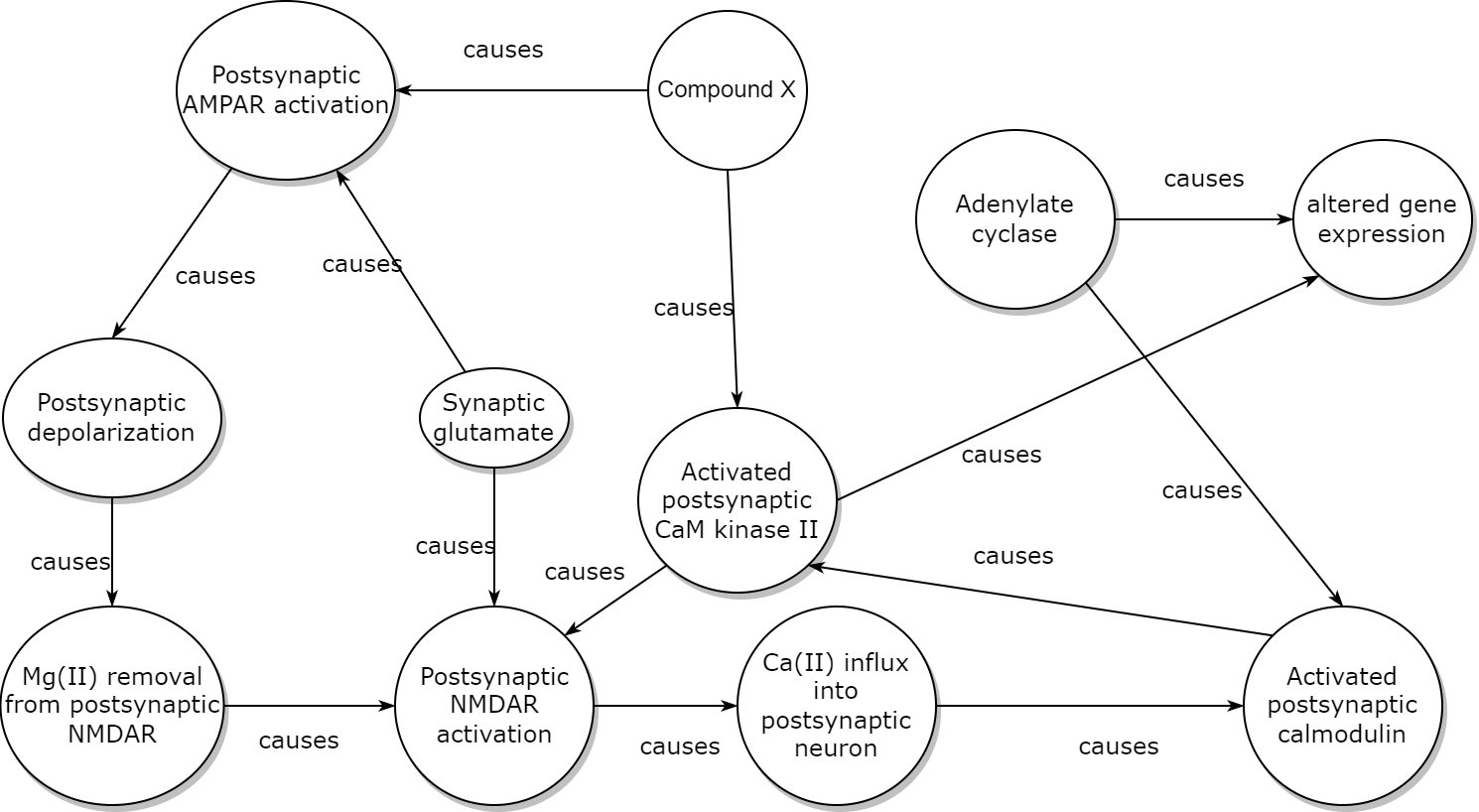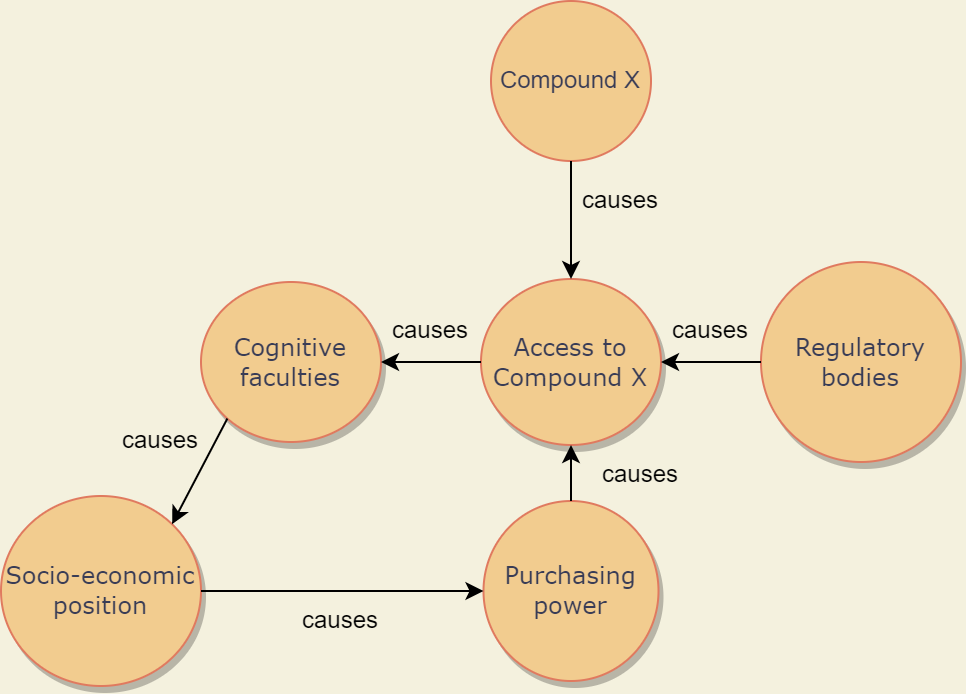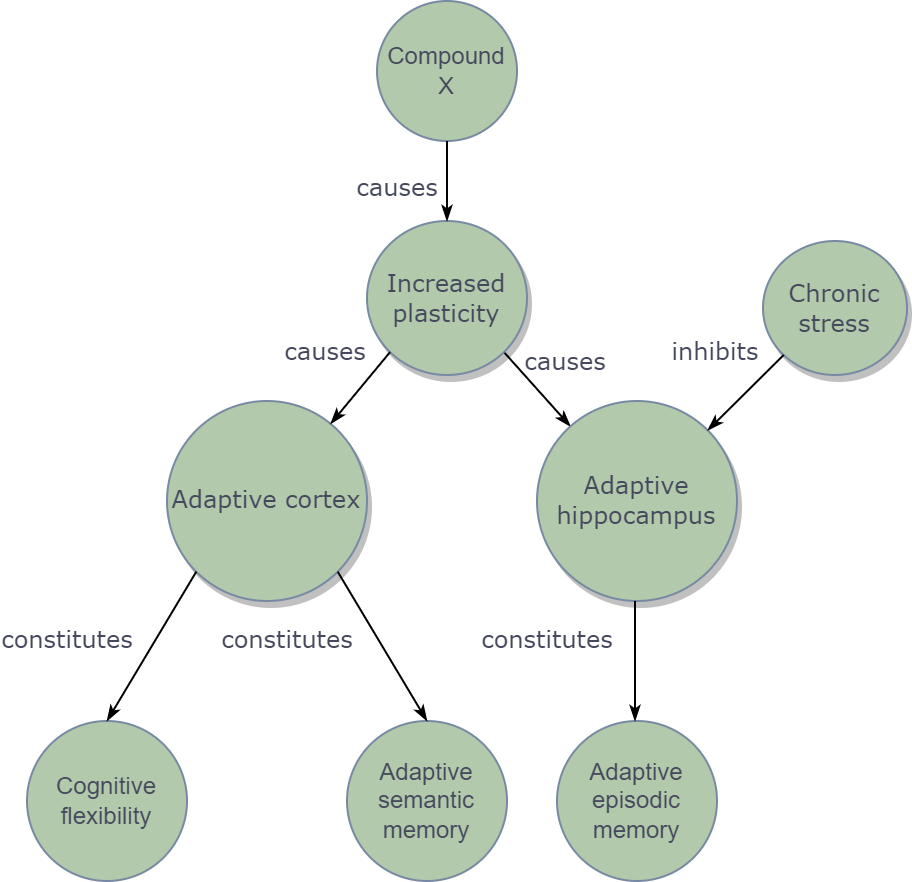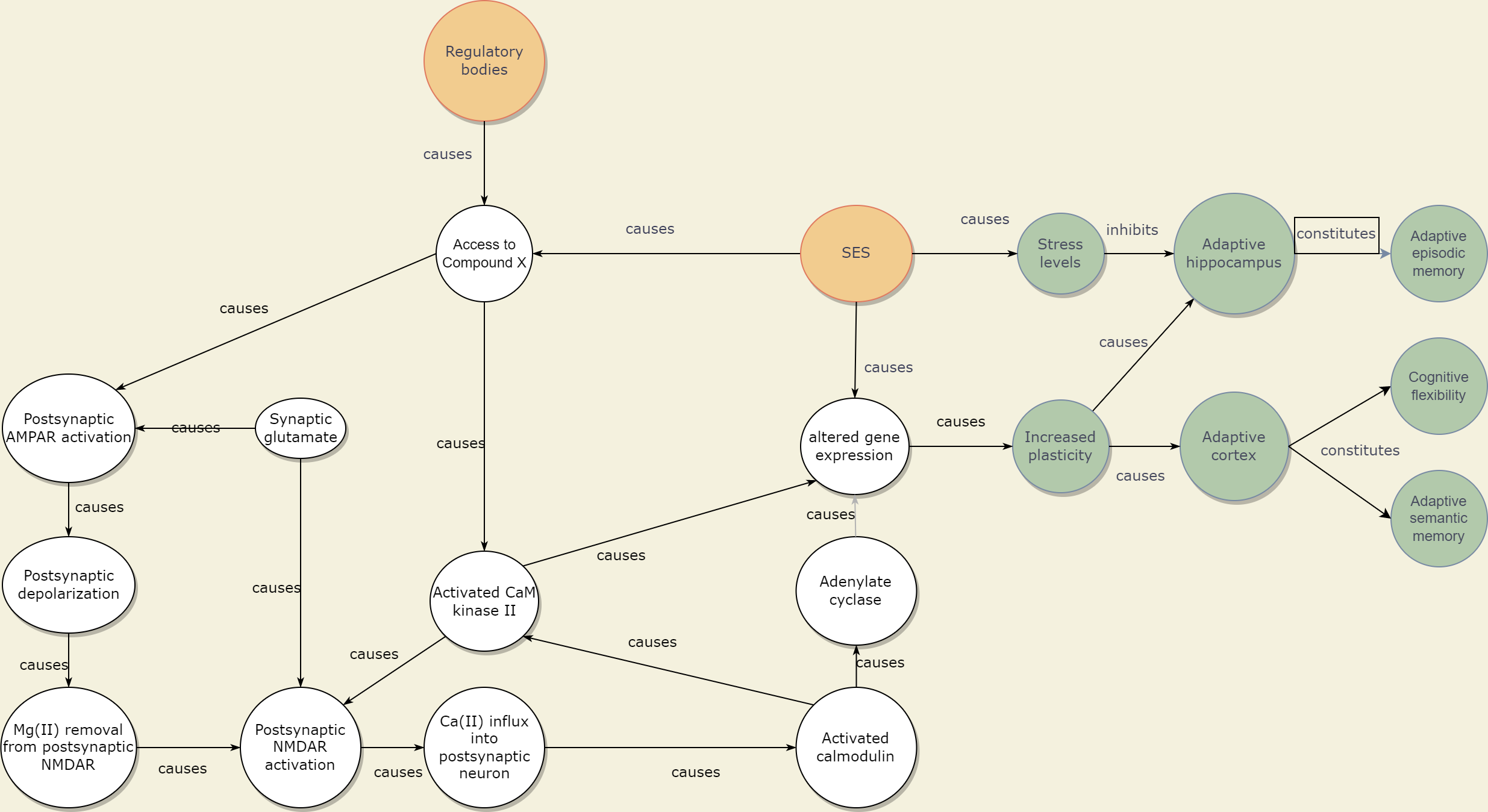Causal maps as tools for interdisciplinary integration

If you think teaching critical thinking is hard, try interdisciplinarity. It’s easy to talk about how combining disciplines leads to more than the sum of its parts, and it’s possible to talk about quality interdisciplinarity as you know it when you see it, but neither is enough to teach students how to explore, analyse and synthesize knowledge from different fields.
Interdisciplinary integration
The thing is, when students explore a topic from a variety of disciplinary perspectives, they can end up with a story in which these perspectives remain separated. That is, they can end up with something that is multidisciplinary instead of interdisciplinary. Such a multidisciplinary product holds the promise of new insights, but it’s not there yet — it still needs to show how phenomena described by one discipline can explain or be explained by phenomena from another discipline. That is, they need to integrate insights.
One approach that can help with interdisciplinary integration is mapping insights from multiple fields together. For example, students may have found both a neuroscientific and a cognitive description of working memory. Both these descriptions have a number of features: the neuroscientific one may describe structures (e.g. dorsolateral prefrontal cortex) and processes (e.g. sustained activity in a neuronal ensemble), while the cognitive one may describe functions (maintaining task-relevant information) and scope (type and amount of information held). By mapping them together, it becomes possible to draw connections between distinct disciplines.
In this series of posts, I will venture into the possibilities of such mapping. My assumption is that interdisciplinary students are not just connecting disciplines for the sake of it, but are rather looking for a deeper understanding of their topic of interest. Can the physiology of sustained activity explain a cognitive feature such as capacity? Does the anatomy of dorsolateral prefrontal cortex explain its functional role?
The maps I will be talking about are called causal maps. That is because the connections drawn on these maps are proposed causal connections. As we will see later, this ties in with a concept called mechanistic explanation. Often, claims about causality can be disputed, but students can still offer hypothetical connections. We will discuss how to critically assess such connections at a later stage.
Causal maps
Just like you can use a geographical map to navigate a city or a region, causal maps help you navigate your research. I'd argue the world studied by scientists consists of explanations and that these explanations can be seen as causal pathways. It's that explanation space that students will try to map. Now I am aware of criticisms of the viewpoint – if you are very much disagreeing with the idea that explanations are the currency of science, you will probably also dislike the causal map approach.
In brief, a causal map is three things at once:
- A collection of components that are considered relevant to a given research topic
- An explication of the (hypothesized) causal relationships between these components
- A means to summarize and clarify topically relevant knowledge obtained by students.
Point 3 means that any causal map that is too detailed for easy interpretation should be pruned or simplified in some other way!
Drafting causal maps
One could in principle draw a causal map without caring much about interdisciplinarity. For example, let’s say a neurobiologist is interested in how a new cognitive enhancer, named Compound X, works at the cellular level. In philosophy-of-science-speak, we can say that her explanandum is the working of Compound X. She has seen that other researchers have speculated Compound X boosts long-term potentiation by activating AMPA receptors. Working from the idea and here background knowledge, she can write down a web of components and causal relations that are associated with her explanandum. Note that she does not need to have a clear research question to do so!

Some of these relations may be well-supported by empirical research, some may just be plausible connections. All may need to be redrawn as new data or ideas come in. Yet regardless of such uncertainties, the resultant map of ideas and relations is a depiction of how the neurobiologist is considering her research interest. That makes it ‘her causal map’ for this particular system of interest.
In a monodisciplinary project, this causal map might inspire specific research questions. Usually, the more ambiguous or uncertain causal connections are worth exploring in new experiments. Or perhaps the mechanisms themselves lead to questions – is anything inhibiting that postsynaptic CaM kinase II?
Yet for an interdisciplinary project, there is some additional work to be done. Using the same explanandum, a sociologist might create his own causal map, but this time featuring components that are studied by sociology. The sociologist is likely to consider the 'working' of Compound X through the lens of social positions and institutions. For example, he could draw up the following causal map.

For a sociologist, the jump to 'causation' may be hard, as social scientists are not always comfortable with the term. However, as will become clear later, we need a common currency for interdisciplinary integration and causal mechanisms are a good candidate for that – as long as there's arguably a causal connection between components, it is good enough for the causal map. The evidence for the causal connection will be examined later on.
Let's add a third causal map. This one was drawn up by a neuropsychologist, who adds some complications to the notion of causality.

The neuropsychologist has added a relationship named 'inhibition', which can be interpreted as 'causing the opposite' and can therefore still be seen as a causal relationship. However, he also added a relationship named 'constitution'. This means that, for example, cognitive flexibility is built from an adaptive cortex. Much like a series of stacked bricks do not cause a wall, the neuropsychologist here is not saying that the adaptive cortex causes cognitive flexibility. It is good practice to label constitutive relationships as such in causal maps early on in the process. If the constitutive relations prove important later, there are tricks to help make sense of them.
Integrating causal maps
The mission for interdisciplinary scientists is to integrate ideas. To get there, they can take multiple disciplinary maps centred around a single explanandum and interconnect them. This yields a multidisciplinary map. Drawing this map is easy, as you can just connect all the maps via the explanandum. However, this usually leads to bulky map that offers no new insights and is not necessarily integrated.
To get to an integrated map, it is useful for the whole team to meet together and to run each other through their disciplinary map. Then, the real puzzle of reorganizing the map begins. Perhaps some components can be merged, or perhaps it is useful to split components. Perhaps there are (arguably) causal relations between components from different disciplines that had not been thought of before. Having a group conversation about the explanandum is likely to reveal many ways in which the different fields intersect or can inform each other.
In the beginning, this will not solve the problem of the map being too bulky, but it will at least become more interconnected across disciplines. A possible first result given the causal maps listed before could be the following one.

It is not uncommon for the relations between disciplines to be less well-established. That's because interdisciplinary research is still relatively rare. But again, the important thing for now is that causal pathways arguably exist. If the nature or existence of potential causal connections are unclear, they could actually make for an interesting research question to pursue.
Using the interdisciplinary map for research
Once the first interdisciplinary map is there, it is time to zoom in. Usually those corners where disciplines intersect are the locations where interdisciplinary research questions pop up. For example, how certain is it that socio-economic status influences gene expression in such a way that it limits brain plasticity? Can compound X modulate this relationship?
Sometimes new intersections are created by breaking down existing components. It might seem like stress is a clear concept, but it is operationalized in many different ways across disciplines. Splitting stress into three different types and exploring how they could each interact with the efficacy of compound X would be another interdisciplinary approach to the topic.
The process of zooming in does mean, however, that remote corners of the causal map become superfluous. Perhaps much of the work put in by the neurobiologist to create her causal map is pruned away while drafting a research question. After all, the fact that compound X influences brain plasticity is relevant to the above questions, but the underlying molecular mechanisms do not necessarily matter. This might be disappointing, as work seemingly evaporates this way, but for the process of integration it was vital.
Even when a research question is established, the map should still change as new information comes in, whether through literature research or empirical work. The causal map reflects the team's understanding of the explanandum and that will change by definition. This does lead to two difficulties, though:
- It difficult to assess whether additional information is relevant to the topic at hand
- It is not always easy to add new information as a causal relation
Difficulty 1, which is a challenge for researchers whether or not they are using causal maps, will be dealt with at a later stage. And before we can tackle difficulty 2, we will need to make a small philosophical detour and discuss which kinds of scientific explanations exist. It's these explanations that we will then learn to express in causal terms.

References
Keestra, M., & Menken, S. (Eds.). (2016). An introduction to interdisciplinary research: Theory and practice. Amsterdam University Press

Member discussion